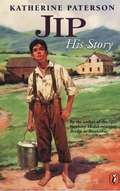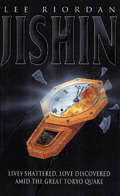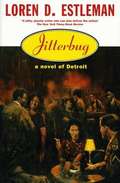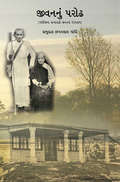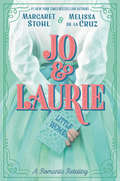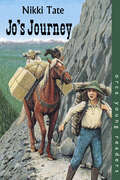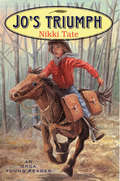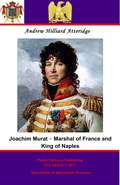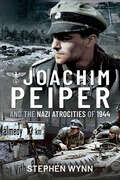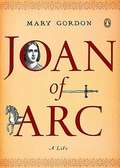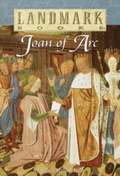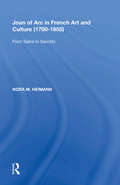- Table View
- List View
Jip, His Story
by Katherine PatersonWhile living on a Vermont poor farm during 1855 and 1856, Jip learns his identity and that of his mother and comes to understand how he arrived at this place. <P> <P><b> Winner of the Scott O'Dell Award for Historical Fiction </b>
Jishin
by Lee RiordanIn 1923, one of the greatest natural disasters ever recorded struck one of the most densely populated areas in the world. In Jishin, author Lee Riordan recreates this calamity, the Great Kanto Earthquake, providing both stirring adventure and touching romance.This book vividly describes the shaking and shuddering of the quake itself, during which thousands died, as much of the cities of Tokyo and Yokohama collapsed around their inhabitants. In the ensuing fires, many more perished as insatiable flames tore through the cities, destroying property and life. This gripping historical novel retells the story of the terrible quake that took over 140,000 lives.Jishin is also the story of Tatiana, the Russian countess, and Hugh, the American professor, who discover their love for one another against the backdrop of this destruction. The author built his tale on the recollections of Tatiana and Hugh, who were his parents, providing the book with an authenticity that gives it unusual poignancy and realism.
Jishin
by Lee RiordanIn 1923, one of the greatest natural disasters ever recorded struck one of the most densely populated areas in the world. In Jishin, author Lee Riordan recreates this calamity, the Great Kanto Earthquake, providing both stirring adventure and touching romance.This book vividly describes the shaking and shuddering of the quake itself, during which thousands died, as much of the cities of Tokyo and Yokohama collapsed around their inhabitants. In the ensuing fires, many more perished as insatiable flames tore through the cities, destroying property and life. This gripping historical novel retells the story of the terrible quake that took over 140,000 lives.Jishin is also the story of Tatiana, the Russian countess, and Hugh, the American professor, who discover their love for one another against the backdrop of this destruction. The author built his tale on the recollections of Tatiana and Hugh, who were his parents, providing the book with an authenticity that gives it unusual poignancy and realism.
Jitterbug (The Detroit Novels #6)
by Loren D. EstlemanMasquerading as a soldier, a serial killer savages wartime Detroit; it&’s up to one detective and his ragtag team to stop himAs the United States enters World War II, Detroit converts its factories to an &“arsenal of democracy,&” fueling the American war machine. The city&’s sons leave to join the fight, but one man does not follow. Declared too unstable for combat, he steals an Air Force corporal&’s uniform. Using the uniform to inspire trust, he talks ration stamp-hoarders into letting him into their homes, where he slits their throats with a bayonet. The newspapers call him Kilroy. On his tail is police Lieutenant Maximilian Zagreb, whose task it is to keep order in a city whose police department has been stripped of everyone but pensioners and army-rejects. Chasing Kilroy will force him far outside the bounds of legal police procedure, but Zag doesn&’t mind cracking skulls to get results. In wartime, a little bloodshed is inevitable. This ebook features an illustrated biography of Loren D. Estleman including rare photos from the author&’s personal collection.
Jitterbug: A Novel of Detroit
by Loren D. EstlemanDetroit of World War II- the anguish of war, hot jazz, racial tension, and a fanatical killer A tough town in a tough time- Detroit during World War II was where the United States' furious effort to out-manufacture the Germans and Japanese occurred. Industry imported workers to replace men gone to war- Southern whites and blacks working side by side for the first time. Detroit had it all: rationing, the black market, the Mafia, fortunes to be made; a new kind of jazz for seething summer nights- a powder keg. Through this tense, troubled world cuts a killer, a self-appointed solr savaging ordinary people, the defenseless. Lieutenant Zagreb's most important job is to keep the city from exploding, then to catch a mad killer with a cop roster of 4-Fs and near- retirees, and, finally, he has to save his own soul. He cannot succeed at all three. Wartime Detroit is dazzlingly recreated
Jivannu Parodh
by Prabhudas Chaganlal Gandhiમારા બન્ને પિતામહ— જેમણે ઘરમાં સદાયે સન્માર્ગને જ પોષ્યો, જેમણે સિત્યાસી વર્ષની ઉંમર સુધી ઉત્સાહી વિદ્યાર્થીનું જીવન ગુજાર્યું, અને જેઓ છેલ્લી પળ સુધી ભગવદ્ગીતાનું જ શ્રવણ-મનન કરતાં કરતાં શાંતિપૂર્વક પોતાનું ખોળિયું ઉતારી ગયા એ મોટા બાપુજીને; તથા જેમણે સદાયે સાચી કેળવણી આપવા પાછળ પોતાના પ્રાણ પાથર્યા, જેમને એંશી વર્ષની ઉંમરે પણ જીવનના પ્રચંડ ઝંઝાવાતો વચ્ચે જુવાનના જોમથી ઘૂમતાં થાક ન જણાયો, અને જેઓ પળે પળે અનાસક્તિયોગના આચરણ દ્વારા વામનને વિરાટના, કૃપણને ઉદારના અને કાયરને પુરુષાતનના પ્રત્યક્ષ પાઠ ભણાવી ગયા, તે બાપુજીને ચરણે...
Jivta Tehvaro
by Kaka Kalelkarઆપણા ધર્મજીવનનાં મૂળિયાં આપણે માનીએ છીએ તેના કરતાં વધારે ઊંડાં છે. અને જો આજની ચિકિત્સક દૃષ્ટિની સાથે જૂનું ધામિર્ક વાચન એક સામાજિક રિવાજ કે સંસ્થા તરીકે સમાજમાં રૂઢ હોત તો એમાંથી સમાજને કીમતી લોકકેળવણી મળી હોત. એ ખામીની પૂતિર્ જ્યાં સુધી બીજી રીતે થાય નહીં ત્યાં સુધી આ તહેવારો પરત્વે જુદે જુદે પ્રસંગે શ્રી કાકાસાહેબે જે લેખો અથવા નોંધો લખી છે તેનો પણ સંગ્રહ કરવાથી સમાજને આપણું સામાજિક-ધામિર્ક જીવન ફરી સજીવન કરવાનું કંઈક દિશાદર્શન તો મળશે જ. એમ લાગવાથી એવા લેખોનો સંગ્રહ આ આવૃત્તિમાં કરેલો છે. આજના જમાનામાં કેવળ શ્રદ્ધાથી કામ નહીં ચાલે અને કેવળ તાકિર્ક અશ્રદ્ધાથી પણ સામાજિક આત્મા સંતુષ્ટ ન થાય. બંનેનો જ્યાં સમન્વય હોય એવાં લખાણો જ લોકહૃદયને પૌષ્ટિક ખોરાક પૂરો પાડી શકે. અહીં એવી કલ્પના બિલકુલ કરેલી નથી કે છેલ્લાં સોબસો વર્ષમાં જે મુગ્ધ રીતે આપણું ધામિર્ક જીવન નભ્યું તે ઢબ જ હંમેશને માટે ચાલતી રહે. આપણો જમાનો આપણી વ્યાપક હાજતો પ્રમાણે નવસર્જનથી આપણે શણગારવો રહ્યો. એને માટેની દૃષ્ટિ કેળવવામાં આ લેખો મદદગાર થશે અને ધામિર્કતાનું વાતાવરણ પેદા કરશે એવી આશા છે.
Jo & Laurie
by Melissa de la Cruz Margaret StohlBestselling authors Margaret Stohl and Melissa de la Cruz bring us a romantic retelling of Little Women starring Jo March and her best friend, the boy next door, Theodore "Laurie" Laurence. <P><P>1869, Concord, Massachusetts: After the publication of her first novel, Jo March is shocked to discover her book of scribbles has become a bestseller, and her publisher and fans demand a sequel. While pressured into coming up with a story, she goes to New York with her dear friend Laurie for a week of inspiration--museums, operas, and even a once-in-a-lifetime reading by Charles Dickens himself! <P><P>But Laurie has romance on his mind, and despite her growing feelings, Jo's desire to remain independent leads her to turn down his heartfelt marriage proposal and sends the poor boy off to college heartbroken. When Laurie returns to Concord with a sophisticated new girlfriend, will Jo finally communicate her true heart's desire or lose the love of her life forever?
Jo and the Pinkerton Man (Dance Hall Road #3)
by Dorothy A Bell1889, Baker City, Oregon. Pinkerton agent Ryder McAdam enlists the aid of a novice schoolmarm by the name of Josephine Buxton to help him round up a family-run gang of train robbers and human traffickers. This passionate partnership proves uncomfortable, inconvenient, and unconventional, an unlikely match to last for all time.
Jo's Boys: How They Turned Out
by Louisa May AlcottThis sequel to Alcott's "Little Women" and "Little Men" chronicles the return of the classmates of Plumfield, Jo's school for boys. Readers re-encounter Nat, the orphaned street musician, now a conservatory student; restless Dan, back from the gold mines of California; business-minded Tom; and other old friends.
Jo's Journey (Orca Young Readers)
by Nikki TateIt's 1861 and orphan Jo has made it from Carson City, Nevada, to San Francisco without anyone figuring out that she's a girl in boy's clothing. When she hears talk of gold strikes in the Cariboo, Jo and her friend Bart sign on for what turns out to be a journey far more arduous and dangerous than anything Jo experienced as a Pony Express rider. Through it all, Jo keeps her true identity a secret. Strong men turn back but Jo forges ahead, unsure of what lies ahead but sure that her father and mother would be proud of her determination.
Jo's Triumph (Orca Young Readers)
by Nikki TateIn the late 1850s in and around Carson City, struggles between the Indians and the local whites are growing. During the struggles, Joselyn, a young orphan, meets Sarah Winnemucca, a Paiute girl who becomes her friend and gives her some valuable advice. When Joselyn takes that advice and escapes from the Carson City Home for Unfortunate Children, she has no idea that her boy's disguise and her love for and expertise with horses will lead her straight to the Pony Express. Joselyn becomes Jo and turns to a life that demands all her inner strength and resources. Then the meanest man on the route learns her secret and uses it to extract a promise that kept or broken could mean death.
Joachim Murat - Marshal of France and King of Naples
by Pickle Partners Publishing Andrew Hilliard AtteridgeThis ebook is purpose built and is proof-read and re-type set from the original to provide an outstanding experience of reflowing text for an ebook reader. A first-rate biography of the famed Marshal Murat, the most famous cavalry leader of the Napoleonic Wars. Joachim Murat was born in Gascony, the department of Lot, and although his father was relatively affluent, no-one realized the spectacular rise that would lead him to a the crown of Naples and an indelible imprint on the history of his native France and all of Europe. Atteridge wrote a number of books on the men who worked as satellites to Napoleon, Emperor of the French, his commanders on the battlefield and the brothers he placed, or tried to place in power as a buffer to a vengeful Europe. Marshal Murat has often been caricatured as a dashing cavalry commander with little more brains than the horse he rode, however the portrait here painted is much more complex than the simplistic view carted out by some other historians. More than a superlative leader of cavalry, in the short campaigns of the emergent French army, he grew distant from Napoleon due to constant goadings and rebukes, he was a varied man, vain and pompous, a dedicated family man, yet possibly also cuckold. He was to find a ignominious grave, for firing squad, at Pizzo having attempted to emulate his former master's march on Paris in his adopted Naples. Highly recommended. Atteridge's book forms a companion to his other single volume biography of Marshal Ney and his work on the varied personalities on Napoleon's Brothers. Text taken, whole and complete, from the 1911 first edition, published in London by Metheun and Co. Ltd. Original - 338 pages. Author- Andrew Hilliard Atteridge (1844-1912) Linked TOC and 7 Illustrations and 3 maps.
Joachim Peiper and the Nazi Atrocities of 1944
by Stephen WynnJoachim Peiper held the rank of Obersturmbannführer in Nazi Germany’s fanatical Schutzstaffel, more commonly referred to as the SS. He spent the first two years of the war as an adjutant to the Reichsführer of the Schutzstaffel, and leading member of the Nazi Party, Heinrich Himmler, where he would have witnessed at first hand the construction and implementation of numerous SS policies, many of which would have been in relation to ethnic cleansing and the Holocaust. In October 1941, having yearned for a chance at combat, he changed roles and became a commander in the Waffen-SS, although he still remained in regular contact with Himmler. As a member of the 1st SS Panzer Division Leibstandarte, he saw service in the Soviet Union, Italy and Belgium. On 19 September 1943, he and his men were responsible for the murder of twenty-four Italian civilians at the village of Boves. On 17 December 1944, men under his command were responsible for what became known as the Malmedy massacre, involving the murder of eighty-four unarmed American prisoners of war. Following this, between 17 and 20 December, Peiper and his men were involved in the murder of a number of other American soldiers, as well as Belgian civilians. Peiper was never charged with the atrocities at Boves, but in 1946 he faced an American military tribunal for the Malmedy masssacre. Although found guilty and sentenced to death, his sentence was reduced to life imprisonment but he was eventually released in 1956. In 1972, Peiper moved to the French village of Troves in north east France. On 14 July 1976, his home was attacked and set on fire. Overcome by smoke, he died in the flames.
Joachim Prinz, Rebellious Rabbi: An Autobiography--the German and Early American Years
by Michael A. MeyerJoachim Prinz (1902-1988) was one of the most extraordinary and innovative figures in modern Jewish history. Never one for conformity, Prinz developed and modeled a new rabbinical role that set him apart from his colleagues in Weimar Germany. Provocative, strikingly informal and determinedly anti-establishment, he repeatedly stirred up controversy. During the Hitler years, Prinz strove to preserve the self-respect and dignity of a Jewish community that was vilified on a daily basis by Nazi propaganda. After immigrating to the United States in 1937, he soon became a prominent rabbi in New Jersey, drawing thousands to his unpredictable sermons. Prinz's autobiography, superbly introduced and annotated by Michael A. Meyer, offers a fascinating glimpse into the life and personality of this unconventional and influential rabbi.
Joachim of Fiore and the Influence of Inspiration: Essays in Memory of Marjorie E. Reeves (1905-2003) (Church, Faith and Culture in the Medieval West)
by Julia Eva WannenmacherJoachim of Fiore and the Influence of Inspiration. Essays in Memory of Marjorie E. Reeves (1905-2003) is a title that is deliberately reminiscent of the title of Marjorie Reeves’ opus magnum: her book ’The Influence of Prophecy in the Later Middle Ages’ has been fundamental in the field of Joachimist studies from its publication in 1969 right up until today. The present volume is inspired both by Joachim of Fiore’s lasting influence, which can be found in many places from the early thirteenth century until postmodern times, and by Marjorie Reeves’s unsurpassed scholarly achievements and her inspiring personality. British, Continental and American scholars of several generations, from different academic disciplines, follow the paths she has opened, try to answer questions she was the first to ask, offer new insights and new texts in state of the art editions, immersing themselves deeply into materials Marjorie Reeves had provided us with in the field of Joachimism and the influence of prophecy. The volume is divided into three parts. In the first, the studies shed new light on different aspects of Joachim of Fiore’s life and work. The second and third parts are dedicated to Joachim’s afterlife -- with the contemporary and late medieval reception of Joachim’s thought in the Iberian Peninsula, England, and Provence, and then on on Joachim’s Wirkungsgeschichte in early modern England and Germany.
Joan Littlewood (Routledge Performance Practitioners)
by Nadine HoldsworthThis book uses original archival material to consider the theatrical and cultural innovations of Joan Littlewood and her company, 'Theatre Workshop'. Littlewood had a huge impact on the way theatre was generated, rehearsed and presented during the twentieth century. Now reissued, Joan Littlewood is the first book to combine: an overview of Littlewood's career in relation to the wider social, political and cultural context an exploration of Littlewood's theatrical influences, approach to actor's training, belief in the creative ensemble, attitude to text, rehearsal methods and use of improvisation a detailed case study of the origins, research, creative process and thinking behind Littlewood's most famous production, Oh What a Lovely War, and an assessment of its impact a series of practical exercises designed to capture and illustrate the key approaches Littlewood used in the rehearsal room. As a first step towards critical understanding, and as an initial exploration before going on to further, primary research, Routledge Performace Practitioners offer unbeatable value for today's student.
Joan Mitchell: Lady Painter
by Patricia Albers"Gee, Joan, if only you were French and male and dead." --New York art dealer to Joan Mitchell, the 1950s. She was a steel heiress from the Midwest--Chicago and Lake Forest (her grandfather built Chicago's bridges and worked for Andrew Carnegie). She was a daughter of the American Revolution--Anglo-Saxon, Republican, Episcopalian. She was tough, disciplined, courageous, dazzling, and went up against the masculine art world at its most entrenched, made her way in it, and disproved their notion that women couldn't paint.Joan Mitchell is the first full-scale biography of the abstract expressionist painter who came of age in the 1950s, '60s, and '70s; a portrait of an outrageous artist and her struggling artist world, painters making their way in the second part of America's twentieth century. As a young girl she was a champion figure skater, and though she lacked balance and coordination, accomplished one athletic triumph after another, until giving up competitive skating to become a painter. Mitchell saw people and things in color; color and emotion were the same to her. She said, "I use the past to make my pic[tures] and I want all of it and even you and me in candlelight on the train and every 'lover' I've ever had--every friend--nothing closed out. It's all part of me and I want to confront it and sleep with it--the dreams--and paint it."Her work had an unerring sense of formal rectitude, daring, and discipline, as well as delicacy, grace, and awkwardness.Mitchell exuded a young, smoky, tough glamour and was thought of as "sexy as hell." Albers writes about how Mitchell married her girlhood pal, Barnet Rosset, Jr.--scion of a financier who was head of Chicago's Metropolitan Trust and partner of Jimmy Roosevelt. Rosset went on to buy Grove Press in 1951, at Mitchell's urging, and to publish Henry Miller, Samuel Beckett, Jean Genet, Jack Kerouac, Allen Ginsberg, et al., making Grove into the great avant-garde publishing house of its time. Mitchell's life was messy and reckless: in New York and East Hampton carousing with de Kooning, Frank O'Hara, James Schuyler, Jane Freilicher, Franz Kline, Helen Frankenthaler, and others; going to clambakes, cocktail parties, softball games--and living an entirely different existence in Paris and Vétheuil.Mitchell's inner life embraced a world beyond her own craft, especially literature . . . her compositions were informed by imagined landscapes or feelings about places. In Joan Mitchell, Patricia Albers brilliantly reconstructs the painter's large and impassioned life: her growing prominence as an artist; her marriage and affairs; her friendships with poets and painters; her extraordinary work. Joan Mitchell re-creates the times, the people, and her worlds from the 1920s through the 1990s and brings it all spectacularly to life.
Joan Myers Brown & The Audacious Hope Of The Black Ballerina
by Robert Farris Thompson Ananya ChatterjeaFounder of the Philadelphia Dance Company (PHILADANCO) and the Philadelphia School of Dance Arts, Joan Myers Brown's personal and professional histories reflect the hardships as well as the advances of African-Americans in the artistic and social developments of the second half of the twentieth and the early twenty-first centuries.
Joan Soldado
by Paul J. VanderwoodPaul J. Vanderwood offers a fascinating look at the events, beliefs, and circumstances that have motivated popular devotion to Juan Soldado, a Mexican folk saint. In his mortal incarnation, Juan Soldado was Juan Castillo Morales, a twenty-four-year-old soldier convicted of and quickly executed for the rape and murder of eight-year-old Olga Camacho in Tijuana in 1938. Immediately after Morales's death, many people began to doubt the evidence of his guilt, or at least the justice of his brutal execution. People reported seeing blood seeping from his grave and hearing his soul cry out protesting his innocence. Soon the "martyred" Morales was known as Juan Soldado, or John the Soldier. Believing that those who have died unjustly sit closest to God, people began visiting Morales's grave asking for favors. Within months of his death, the young soldier had become a popular saint. He is not recognized by the Catholic Church, yet thousands of people have made pilgrimages to his gravesite. While Juan Soldado is well known in Tijuana, southern California's Mexican American community, and beyond, this book is the first to situate his story within a broader exploration of how and why popular canonizations such as his take root and flourish. In addition to conducting extensive archival research, Vanderwood interviewed central actors in the events of 1938, including Olga Camacho's mother, citizens who rioted to demand Morales's release to a lynch mob, those who witnessed his execution, and some of the earliest believers in his miraculous powers. Vanderwood also interviewed many present-day visitors to the shrine at Morales's grave. He describes them, their petitions--for favors such as health, a good marriage, or safe passage into the United States--and how they reconcile their belief in Juan Soldado with their Catholicism. Vanderwood puts the events of 1938 within the context of Depression-era Tijuana and he locates people's devotion, then and now, within the history of extra-institutional religious activity. In Juan Soldado, a gripping true-crime mystery opens up into a much larger and more elusive mystery of faith and belief.
Joan of Arc
by Kathleen V. KudlinskiThe story of Joan, a young farm girl who became a Christian martyr after she heard voices encouraging her to secure the throne of France for its rightful heir.
Joan of Arc
by Mary GordonJoan of Arc was born in 1412 and grew up during a time of invasion and civil war. At thirteen, she began to hear the voices of saints and followed their directives, believing they were sent to her by God. At seventeen, she rode into battle to rescue France from English domination in the Hundred Years War and in 1431, aged only nineteen, she was put on trial for heresy and sorcery by an ecclesiastical court of the Inquisition, and burned at the stake. Joan radiated with deep piety, self-assurance, decisiveness, and shrewd intelligence as her responses to hostile questioning preserved in the records of the rigged trial demonstrate. In this glittering portrait of the illiterate peasant girl who became the saviour of France, Joan of Arc's energy, spirit and her heroism as the first to die for a Christian-inspired idea of nationalism, are beautifully portrayed.
Joan of Arc
by Nancy W. RossIn the early 15th century, France was in turmoil. The country had been at war for years, and it had no king. Out of the chaos came Joan of Arc. No one knows how Joan, a poor farm girl, was able to command armies and win battles, but she did all that and more. Some called Joan a heroine. Others called her a witch. But with her determination and unwavering faith, she would go down in history as Saint Joan of Arc.
Joan of Arc
by Shana CoreySensitively and dramatically told, this book brings the story of Joan of Arc to life, from her simple childhood to her tragic end.
Joan of Arc in French Art and Culture (1700�855): From Satire to Sanctity
by Nora M. HeimannIn her meticulous and wide-ranging study, Nora M. Heimann follows the metamorphosis of Joan of Arc's posthumous representation during the years in which her image ascended from relative obscurity as a minor provincial figure in the middle ages through her treatment as a figure of political satire in the eighteenth century to her ultimate emergence as an image of piety and sanctity in the mid-nineteenth century. Offering the first scholarly art historical and cultural analysis of the origins of the modern Joan of Arc cult, she takes on the challenge of charting, as no previous critic has, why and how the Maid of Orl‘s has been all things to such a diverse public through the ages, particularly during the rapid shifts in political regimes that came in the wake of the French Revolution. Joan of Arc's image has shown a protean capacity to embody a vast and often contradictory range of qualities, from martial ascendancy to vulnerable piety, from maidenly purity to transgressive androgyny, from the power of the people to the divine right of kings. Heimann makes a persuasive case for this enduringly resonant woman as the only figure in French culture to be warmly embraced simultaneously by republicans, monarchists, feminists, and neo-fascists alike. In its recounting of the iconographic fortunes of this remarkable woman during her transformation from an image of satire to one of sanctity, Joan of Arc in French Art and Culture (1700-1855) offers an illustrated, interdisciplinary depiction of the relationship between art and politics that will appeal not only to art historians but also to those working in literature, women's studies, cultural studies, intellectual history, and religious history.
